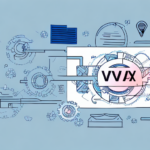Stay Up-to-Date on the Latest EU VAT Updates
Taxes are a critical component of any business operation and can often be a complex and confusing process. In Europe, value-added tax (VAT) is a crucial part of businesses’ tax obligations. While keeping up with ever-changing regulations can be challenging, understanding the basics of EU VAT and staying informed about the latest changes is essential for compliance and avoiding costly penalties. In this article, we provide an in-depth analysis of EU VAT, including recent updates, common challenges businesses face, best practices for managing EU VAT obligations, and resources for staying informed.
Understanding the Basics of EU VAT
Value-added tax (VAT) is a consumption tax applied to most goods and services sold within the EU. The mechanism is straightforward: when a business sells a product or service, it adds VAT to the price and collects it on behalf of the government. This tax is ultimately paid by the end consumer. Businesses are responsible for maintaining accurate records of the VAT they have charged and paid, and for remitting the difference to the relevant tax authority.
EU VAT is a complex system with numerous rules and regulations. VAT rates vary across member states, and some countries offer reduced rates for specific products or services. Additionally, there are particular VAT regulations for transactions between EU member states and for businesses selling digital services or products. Handling VAT on imports and exports can also be complicated due to country-specific rules and customs procedures. Understanding these fundamentals is crucial to ensure compliance and avoid costly penalties.
One essential aspect of EU VAT is VAT registration. Businesses that exceed a certain sales threshold in a member state must register for VAT in that country, charge VAT on their sales, and submit regular VAT returns to the tax authority. Failure to register when required can result in significant penalties and fines.
Another important consideration is the VAT refund process. If a business incurs VAT on expenses related to its operations, such as purchasing goods or services, it may be eligible for a VAT refund. However, claiming a refund can be complex and time-consuming, requiring meticulous documentation and adherence to specific requirements to qualify.
The Importance of Keeping Up-to-Date with EU VAT Regulations
EU VAT regulations are frequently updated, making it critical for businesses to stay informed to avoid penalties and fines. Non-compliance can lead to hefty fines, penalties, and even prosecution. For instance, failing to register for VAT when required may result in tax authorities demanding back-paid VAT, along with interest and penalties. This is particularly challenging for businesses operating across multiple EU member states or those selling digital products and services. Staying current with VAT regulations is essential to mitigate legal and financial risks.
Recent EU VAT Changes and Updates You Need to Know About
Several significant changes have been made to EU VAT regulations in recent years:
- Cross-Border E-Commerce VAT Regulations (2019): Implemented by the European Commission, these regulations apply to online sales of goods and services to EU consumers, regardless of whether the seller is based within or outside the EU. This change aims to create a more level playing field for businesses and simplify VAT compliance.
- VAT E-Commerce Package (Effective July 1, 2021): This package simplifies VAT compliance for businesses selling digital products and services and establishes new VAT obligations for online marketplaces. It introduces the One-Stop Shop (OSS), allowing businesses to register for VAT in one EU member state to cover their VAT obligations across the EU.
- Digital Services VAT Changes: Ongoing adjustments to VAT rules for digital services to better capture the shifting landscape of digital commerce and ensure VAT is collected where consumption occurs.
These updates are designed to streamline VAT processes, reduce administrative burdens, and ensure fair competition within the EU market. Staying informed about these changes is vital for maintaining compliance.
How Brexit Has Impacted EU VAT Regulations
The UK's departure from the EU has significantly altered VAT rules for goods moving between the UK and the EU. VAT obligations now vary depending on whether goods are sold within the UK, the EU, or both. For example, businesses selling goods to EU customers must now register for VAT within the EU and comply with those regulations. Additionally, imports from the UK to the EU may be subject to different VAT rates and customs procedures. Understanding these changes is crucial to avoid penalties and ensure proper VAT compliance.
Common Challenges Businesses Face with EU VAT Compliance
EU VAT compliance presents several challenges for businesses, including:
- Keeping Up with Regulatory Changes: Frequent updates to VAT laws require businesses to stay informed and adapt quickly.
- Understanding Diverse VAT Rules: Variations in VAT rates and regulations across EU member states add complexity to compliance efforts.
- Managing VAT on Imports and Exports: Handling VAT for cross-border transactions involves navigating different customs and tax procedures.
- Digital VAT Challenges: Determining the location of customers and applying the correct VAT rates for digital products and services can be particularly complex.
Addressing these challenges requires robust systems, knowledgeable staff, and often, the assistance of VAT experts.
Tips for Staying Compliant with EU VAT Regulations
To ensure compliance with EU VAT regulations, businesses should adopt the following best practices:
- Stay Informed: Regularly monitor updates to VAT laws and regulations through official channels such as the European Commission.
- Accurate Calculations: Use reliable VAT calculation methods to ensure accurate VAT returns.
- Timely Submissions: Submit VAT returns and payments on time to avoid penalties.
- Maintain Detailed Records: Keep comprehensive records of all VAT transactions and payments.
- Leverage Technology: Utilize VAT compliance software to automate calculations, filings, and record-keeping.
- Seek Expert Advice: Partner with experienced VAT advisors to navigate complex regulations and ensure compliance.
The Role of Technology in Streamlining EU VAT Compliance
Technology plays a vital role in simplifying VAT compliance processes. VAT compliance software can automatically calculate VAT owed, generate VAT returns, and track payments, significantly reducing the risk of errors and increasing efficiency. Additionally, tools such as online VAT calculators and VAT registration tools help businesses determine their VAT obligations and registration requirements accurately. By leveraging these technologies, businesses can save time, minimize errors, and reduce compliance risks.
How to Handle Disputes and Audits Related to EU VAT
Disputes and audits related to EU VAT can be time-consuming and stressful. To effectively manage these situations, businesses should:
- Maintain Detailed Records: Keep comprehensive documentation of all VAT transactions and payments.
- Demonstrate Compliance: Ensure that all VAT filings and payments comply with regulations.
- Engage Experts: Work with qualified VAT experts or advisors to navigate the dispute or audit process.
- Respond Promptly: Address requests from tax authorities in a timely and accurate manner.
Preparation and proactive management are key to resolving disputes and audits efficiently.
Best Practices for Managing Your Business's EU VAT Obligations
Effectively managing EU VAT obligations involves implementing several best practices:
- Identify Applicable VAT Rates and Rules: Determine the correct VAT rates and rules for each EU member state where you operate.
- Register for VAT: Ensure your business is registered for VAT in all necessary jurisdictions.
- Maintain Accurate Records: Keep detailed records of all VAT-related transactions and payments.
- File VAT Returns on Time: Submit VAT returns and payments by the deadlines set by each member state.
- Consult VAT Experts: Seek advice from qualified VAT professionals to navigate complex regulations and ensure compliance.
Adhering to these best practices helps streamline VAT processes and minimize the risk of non-compliance.
Key Differences Between EU VAT and Other Global Tax Systems
The EU VAT system differs significantly from other global tax systems, such as the sales tax used in the United States:
- VAT vs. Sales Tax: VAT is based on the value added at each stage of production and distribution, whereas sales tax is applied only to the final sale price of a product or service.
- Collection: VAT is collected by businesses and ultimately paid by consumers, while sales tax is typically collected directly from consumers at the point of sale.
- Rate Variability: VAT rates can vary across different EU member states, adding complexity for businesses operating in multiple countries.
Understanding these differences is crucial for businesses engaged in international trade and operations.
Understanding the Implications of Cross-Border Transactions on EU VAT Compliance
Cross-border transactions introduce unique VAT compliance challenges. When goods or services are sold across borders within the EU, different VAT rules and rates may apply, making it difficult to determine VAT obligations accurately. Businesses engaged in cross-border trade must:
- Identify the correct VAT rates and rules for each transaction.
- Ensure proper VAT registration in each applicable member state.
- Manage VAT documentation and reporting requirements meticulously.
Non-compliance with cross-border VAT regulations can result in penalties, fines, and reputational damage. Utilizing VAT compliance software and seeking expert advice can help businesses navigate these complexities effectively.
How to Navigate the Complexities of Digital Services and EU VAT
The VAT rules for digital services are intricate and continually evolving. Under the new EU VAT e-commerce rules, businesses selling digital services to EU customers must:
- Charge VAT at the rate applicable in the customer's country of residence.
- Determine the location of their customers to apply the correct VAT rate.
- Be aware of the VAT exemption thresholds for digital services, which vary by EU member state.
To navigate these complexities, businesses should:
- Utilize VAT compliance software to automate VAT calculations and filings.
- Consult with VAT experts to ensure accurate compliance.
- Stay informed about ongoing changes to digital VAT regulations.
Proper management of digital VAT obligations is essential for businesses operating in the digital marketplace.
The Future of EU VAT: What Changes Can We Expect in the Coming Years?
The EU VAT landscape is expected to continue evolving, particularly as digital commerce grows. Anticipated changes include:
- Digital VAT Obligations for Online Marketplaces: Introduction of obligations requiring online marketplaces to collect and remit VAT on behalf of sellers.
- Enhanced VAT Compliance Measures: Implementation of more robust compliance and reporting requirements to combat VAT fraud and ensure accurate VAT collection.
- Integration with Digital Platforms: Increased integration of VAT compliance features within e-commerce platforms and digital services.
Businesses should stay informed about these potential changes to adapt their VAT strategies proactively and maintain compliance.
Resources for Staying Informed on the Latest News and Updates Regarding EU VAT
Staying up-to-date with the latest EU VAT developments is essential for compliance. Key resources include:
- Official Tax Authority Websites: Access the latest regulations and guidance from sources like the European Commission's VAT page.
- VAT Compliance Software: Utilize tools from providers such as ShipScience VAT Software to manage VAT obligations efficiently.
- VAT Experts and Advisors: Consult with qualified professionals who can provide tailored advice and support.
- Industry Associations: Join organizations like the International Association for Taxation and VAT Management to stay informed about industry trends and updates.
By leveraging these resources, businesses can remain compliant with EU VAT regulations and minimize the risk of penalties and fines.
In conclusion, staying up-to-date with the latest EU VAT updates is crucial for businesses to maintain compliance and avoid costly penalties. By understanding the fundamentals of EU VAT, remaining informed about recent changes, and leveraging technology and best practices, businesses can streamline their VAT compliance processes and minimize risks. Additionally, seeking guidance from qualified VAT experts and utilizing reliable resources will help businesses stay informed and effectively manage their EU VAT obligations.




















